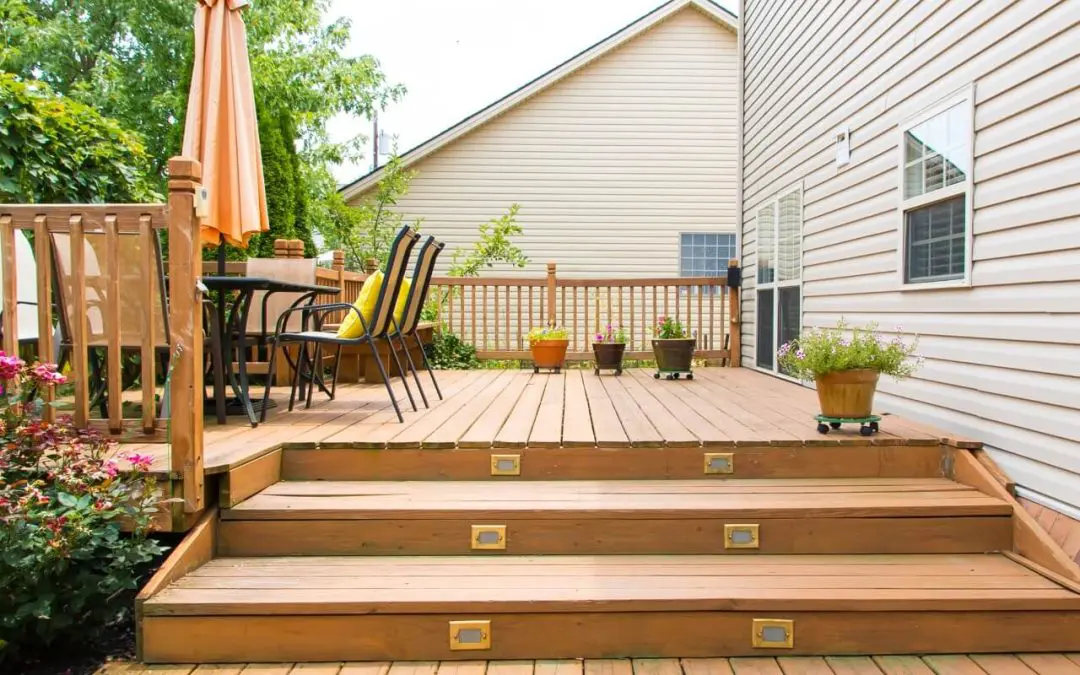Building a deck seems straightforward—pick a design, choose some lumber, and get started. But the difference between a deck that holds up for decades and one that starts falling apart in a few years often comes down to details most homeowners miss. You don’t have to buy the most expensive materials, you just need a plan and the right know-how.
Building a Deck Starts with the Footings
The most expensive composite boards won’t matter if your footings aren’t solid. This is the foundation of the entire structure, and it’s where a lot of DIY projects and even some professional jobs go wrong. If the deck isn’t properly supported, it will shift, sag, or sink—especially in areas with freeze-thaw cycles or soft soil. A lasting deck needs deep, well-set concrete footings that meet or exceed local code. Skimping here almost always leads to structural issues.
Drainage Makes or Breaks It
Decks take a beating from the weather, and moisture is the enemy. The number one cause of premature rot and failure in wood decks is poor drainage. That means water is getting trapped between boards, underneath beams, or along the house wall. A properly built deck allows water to run off and away without soaking into the structure. That starts with correct spacing between boards, properly flashed ledger boards, and thoughtful placement of beams and posts.
Too many homeowners (and contractors) overlook this. They focus on appearance or shortcuts that speed up the build, but water damage won’t show up right away. It creeps in over time—and by the time you notice soft spots or mildew, the repair bill is higher than the original build.
Material Alone Doesn’t Guarantee Durability
It’s easy to assume that picking composite boards or pressure-treated wood guarantees a long-lasting deck. But the truth is, the way materials are handled and installed matters just as much. Composite boards can still warp if joists are uneven or spaced incorrectly. Pressure-treated wood will still rot if it’s not sealed or if cuts aren’t treated with end-grain preservative.
Quality materials only perform well when installed the right way. That includes spacing boards correctly, using corrosion-resistant fasteners, and sealing every exposed end cut—especially where water tends to sit.
The Hidden Importance of Hardware When Building a Deck
Fasteners, brackets, and hangers don’t get much attention, but they’re doing all the heavy lifting behind the scenes. Galvanized or stainless steel hardware is non-negotiable. Anything less corrodes over time, especially in humid or coastal environments. Rusted fasteners loosen, shift, and eventually fail.
Homeowners often assume nails are good enough or let contractors cut corners on hidden connectors. The result is a deck that may look fine for a while but slowly becomes unsafe. Every load-bearing connection—posts, beams, joists—should be secured with the right hardware and installed according to the manufacturer’s specs.
Regular Maintenance Starts on Day One
Even the best-built deck won’t last without a little upkeep. That doesn’t mean constant work or yearly overhauls. It means getting ahead of problems early. Sweep debris off the deck. Check for pooling water. Reseal exposed wood every few years. Keep planters and grills off corners that trap moisture.
Maintenance starts when the build is finished. Most homeowners miss this because everything looks brand new. But by the time problems are visible, the damage is usually already done.
FAQs for Building a Deck
How long should a properly built deck last?
With the right materials, good drainage, solid footings, and regular maintenance, a wood deck can last 15–25 years. A composite deck can last 25–30 years or more.
Is composite always better than wood?
Not necessarily. Composite requires less maintenance, but it costs more upfront. Some homeowners prefer the look and feel of natural wood. Both can last a long time if built and cared for properly.
Do I need a permit to build a deck?
In most areas, yes. Local codes typically require a permit for any deck over a certain height or size. It’s also important for insurance and resale. Always check with your local building department before starting.
Can I build a long-lasting deck myself?
Yes, if you understand the structural requirements, have the right tools, and follow code. But many homeowners bring in a professional for peace of mind—especially for larger or elevated decks.
What’s the biggest mistake people make when building a deck?
Skipping proper drainage and flashing. It’s easy to miss during construction, but it causes major issues down the line. Always plan for water runoff and protect the parts of the deck that meet the house.
Cole’s Inspection Services provides home inspection services to Statesville and the surrounding area in North Carolina. Contact us to schedule an appointment.

